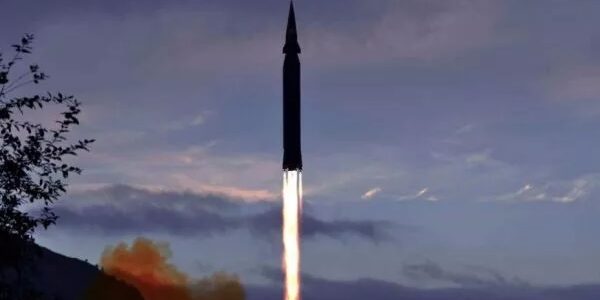| North Korea/U.S. Designation | Hwasong-8 |
| Mobility and Role | Road Mobile TEL |
| Designer and Producer | N/A |
| Range | 3,200km |
| Warhead Type and Weight | Conventional/Nuclear |
| MIRV and Yield | No/Unknown |
| Guidance System/Accuracy | Hypersonic Glide Vehicle (HGV) |
| Stages/Propellant | UDMH/N2O4 Ampoule |
| IOC/Retirement | N/A |
| Status/Number of Units | Unknown |
Overview
On September 29, 2021 North Korea successfully tested their Hwasong-8 hypersonic glide vehicle ballistic missile. The missile can be launched from a road mobile Transporter Erector Launcher (TEL) It purportedly has a hypersonic speed of Mach 5+ and a range of at least 3,200km. They reported successful tests again on the 5th and 12th of January 2022. The Hwasong-8 introduced the pre-fueled ampoule that could be carried and inserted into the missile when ready to fire, drastically increasing the reaction time of liquid fueled missiles. [i]
Strategic Implications
The Hwasong-8 gives North Korea a strategic edge against any nation that doesn’t have HGV technology or missile defense systems against it. North Korea joins Russia and China in holding HGV missiles. The highly maneuverable and manually controllable warhead can evade many high end anti-missile systems. The Hwasong-8 range puts Guam and the Philippines in view, creating a serious strategic threat for the US frontline in Guam. While THAAD can conceptually target HGVs, it has not had extensive practice in live tests. THAAD systems stationed in South Korea and Guam are the main high altitude effective missile defense systems in the fire line of North Korea.

